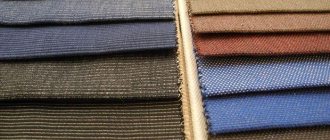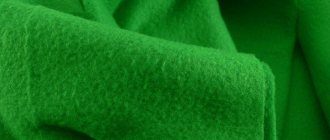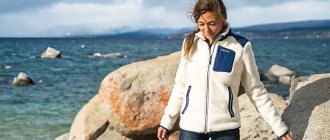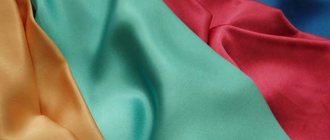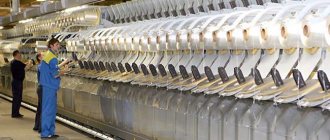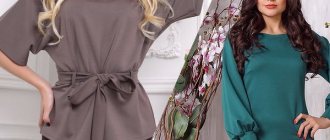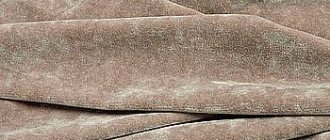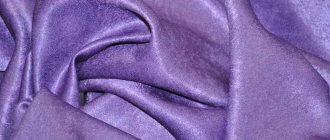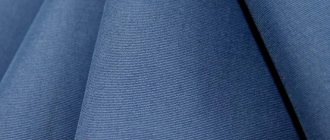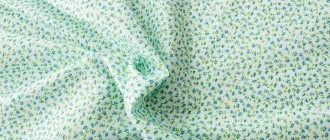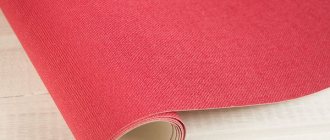Fleece (English) fleece — sheepskin ) is the name given to synthetic knitted materials made from polyester fiber (polyester), specially treated to significantly reduce thermal conductivity. The name “polar fleece” was coined by Malden Mills in 1979 for a material they invented. Since then, a whole class of clothing has come to be called this way. And in the tourist environment you can often hear the names “polar” and “fleece”.
Fleece fabric is used to make jackets and trousers, hats, gloves and other products used to retain heat. In the modern outdoor industry, products made from this material are often used as a second, warming layer in a three-layer clothing system. The leader among manufacturers of high-quality fleece is Polartec ®.
In addition to good heat-saving characteristics, fleece is light, soft, pleasant to the touch, does not wrinkle and has high hydrophobicity, that is, its fibers do not absorb water. Therefore, fleece products dry quickly and remove moisture well from the surface of human skin into the surrounding space.
The history of fleece fabrics
Before the advent of fleece, people used the wool of sheep and other animals to make warm clothing. Wool also had its drawbacks, such as weight, loss of thermal properties when wet, and lack of windproof properties.
In 1979, fleece was born, a lightweight, elastic, quick-drying, breathable fabric.
But the new fabric had weaknesses: electrification, collecting dust, and the biggest one - the fabric was highly flammable (this problem does not exist now).
Fleece - what kind of fabric, description and composition
Fleece is a lightweight, warm and soft to the touch fabric. Material of artificial origin, based on polyester. During production, both primary and secondary raw materials can be used, for example, plastic bottles.
Fleece fiber has good thermal insulation, hypoallergenicity, elasticity, and hydrophobicity. In addition, fleece is a light and breathable material, and it can be worn for quite a long time.
Production of knitted polyester fabric
Knitting fabric from polyester threads is practically no different from conventional knitting on circular knitting machines. The result also looks quite familiar - in the form of a long knitted “tube” of white color, similar to an endless knitted sock for Gulliver. The “pipe” is washed, painted, treated with water-repellent impregnation and cut. That is, no high-tech miracles happen at this stage. Almost all these procedures are performed by every grandmother with knitting needles in her hands when knitting socks for her beloved grandchildren. True, my grandmother is not familiar with the problems of dyeing polyester that manufacturers of polyester knitwear face - it is difficult to dye.
The fabric knitted, dyed and prepared for the following operations has one side quite smooth, and the other rough due to the abundance of small loops formed during the knitting process. In these loops lies the key to unraveling the secret of fleece.
Types of fleece
Fleece has different thicknesses, which gives it slightly different properties. The thickness of the fabric can be divided into types: micro, 100, 200, 300, 400, 600, where 600 is the thickest and least flexible.
These numbers represent the density of the material based on weight per square meter (g/m2).
Depending on the composition, fleece fabrics are called:
Cotton or cotton blend
The most commonly used fleece for sweatpants and sweatshirts, cotton or cotton-blend fleece has a smooth exterior and a soft, plush interior.
Polyester fleece
Polyester fleece products are becoming increasingly popular. Like cotton or cotton blend, polyester fleece is smooth on the outside and plush on the inside.
Polyester fleece differs from cotton fabrics in that its outer side has a shiny appearance and it does a better job of repelling moisture.
Lycra, spandex
Lycra, spandex is a blend of cotton and polyurethane elastic threads to create a stretchy fabric. It is popular for both women's clothing and teenagers.
Microfiber.
Microfiber is double-sided, thin and soft. Copes well with moisture absorption.
Mahra
Fabric covered with pile, based on loops. Tender, soft. The density depends on the size of the pile.
Textured fleece
A fabric made from two different sizes of yarn twisted together. The result is a fabric with a textured appearance.
Sherpa fleece
Sherpa is 100% polyester, very fluffy. Externally similar to natural wool (larger fibers).
Velours
Doesn't roll off over time if it's of good quality. The inside is soft and smooth, fits snugly to the body, pleasant material.
What kind of fleece is there?
The characteristics of clothing based on fleece materials have made it very popular among outdoor enthusiasts. However, there are many active people, and they engage in different types of activities - from walking with a dog to mountain climbing. Each of them ideally requires not some average fleece jacket , but a product specially designed for specific operating conditions. Of course, manufacturers could not miss this opportunity, as a result of which quite a few varieties of fleece appeared, which differ from each other in density, thickness, texture, number of layers, types of processing of the front and back surfaces.
The main characteristic of fleece, indicating its heat-saving functions, is its specific density, which can be from 100 to 600 g/m. Shirts , sweatshirts are made from low-density fabric, and densities from 200 g/m are already well suited for outdoor class products, which can be used both independently and as an insulating layer in multi-layer clothing. membrane materials are often found in modern fleece jackets . Fleece can also be used as an insulating inner lining in clothing made from other textile materials.
Fleece care
Caring for fleece items is specific, so we will dwell on this issue in more detail and look at how to wash, iron and wear fleece items.
How and at what temperature should you wash fleece?
- When it comes to washing clothes, the acceptable conditions will be indicated on the label.
- If there is no label and you are sure that the fabric is completely synthetic, you can take a piece of material sewn inside, pull out the thread and set it on fire. Natural material burns well, synthetic material will melt.
- It is advisable to wash fleece fabrics separately from natural fabrics.
- The spin cycle must be set at lower speeds (delicate) to avoid the formation of creases.
- It is necessary to wash fleece items more often than natural ones, since the washing modes are more gentle.
- The temperature at which fleece is washed varies between 40-70 degrees.
- When washing by hand, do not rub clothes too hard and do not wring them out. After washing, it is best to hang the product on hangers or a hanger and let the water drain.
- You can wash it with laundry soap and powders for synthetics, wool and silk.
And one more tip: when washing, fleece items must be turned inside out.
Does fleece shrink after washing?
It all depends on the percentage of synthetics, depending on the type of fleece fabric. If we are talking about regular fleece, then no, it does not shrink.
But after washing, you should not hang things on hot radiators or use dryers.
Can fleece be ironed?
Very often the need arises to iron clothes, which raises the question: “Is it possible to iron fleece items?”
It is better not to iron fleece, and generally not to expose it to high temperatures, or to dry it on radiators, for example. This may not cause the fabric to deteriorate, but it is quite possible that it will partially lose its thermal insulation properties.
How to wear (use) fleece?
Despite all the advantages of fleece, it is better to use it as a second layer of clothing, which is worn over thermal underwear, a T-shirt or shirt.
If you wear fleece this way, its properties will be fully revealed, namely the functions of retaining heat and removing excess moisture. In addition, based on tactile sensations, fleece is not always pleasant when worn on a naked body.
Description and composition
Fleece is a non-woven material. Based on synthetic polyester fibers, a dense, knitted fabric with a soft and delicate fleecy structure is obtained.
The raw material is synthetic fiber obtained after primary or secondary processing. The majority of the fabric composition is polyester. Other synthetic fibers are used as additives. The fleece contains spandex additives to give elasticity and lycra, which increases wear resistance due to elastane fibers.
Fleece has no natural analogue. Possessing unique qualities, the material has successfully replaced woolen items.
What temperature is fleece rated for?
When choosing fleece, you need to know how you will use it, just wear it in everyday life or use it for sports.
The larger the structure of the fleece, the lower the temperature it is suitable for. Large pieces of lint provide better warmth in cold weather. Micro-fleece, on the contrary, warms worse, but removes evaporation from the body better.
These are the main technical characteristics of fleece; to understand at what temperature conditions it is more effective, you need to read about a specific product, look at the label or ask the seller.
After all, there are thin fleece thermal underwear, and there are jackets that are used at low temperatures from -30 to -50 degrees.
Production and properties
Fleece fabric is subjected to temperature and moisture treatment, after which the fabric and its properties are formed.
The fabric passes through a special machine, where rollers with an array of small hooks are installed, and the micro-loops are lifted without violating the overall integrity. This is how a fluffy pile is formed from many finest fibers with air-filled, breathing pores.
The use of different processing compositions affects the properties of the material. Thus, additional finishing of fleece reduces its flammability. After the anti-peeling procedure, pellets will not form on the surface, and the consumer qualities and fluffy texture will be preserved for a long time. Water-repellent and antistatic treatment is also used. After exposure to the antibacterial composition, the fabric receives protection from fungus, dust mites, and moths.
Fleece for newborns, can it be used?
You can dress children and newborn babies in fleece. You just need to understand why and how to do it correctly.
Fleece is a hypoallergenic fabric; it itself does not cause irritation, itching, etc. In this regard, fleece clothing can be a good alternative for children who have some skin sensitivity to natural materials.
Secondly, fleece is a moisture-wicking garment due to its properties and porous structure. But it must be used correctly. We discussed how to wear fleece above.
Otherwise, the decision is the prerogative of the parents.
Raw materials for fleece production
Polyester , or more precisely polyethylene terephthalate, is most often found under the name polyester . Experienced tourists probably remember the name lavsan , which polyester acquired thanks to the Laboratory of Macromolecular Compounds of the Academy of Sciences, which was the first in the USSR to obtain this compound in 1949. In other countries, the same material is called differently, for example, Dacron in the USA or Tetoron in Japan. A large number of different materials and products are produced from polyester, from the recently popular storage media - magnetic films, floppy disks - to the “carriers” of liquids - ordinary plastic bottles. By the way, these bottles, after recycling, have a chance to become a fleece jacket, so it is possible that your warm “Polar” has a glorious beer-bottle pedigree.
What is the difference between fleece and polar fleece?
The main difference, without getting too technical, is that polar fleece is designed for harsher temperature conditions.
Most often, polar fleece, if it is of high quality, can cost two or even three times more than regular fleece. But if there is a need for such clothes, then they are worth it, because they are much warmer.
Let's summarize:
Fleece is a modern, technically competent material. Being synthetic, it has stronger thermal and moisture-wicking properties.
The fiber is universal, suitable for all ages and activities. Fleece items, with proper care, last for quite a long time and do not cause any inconvenience.
If you liked the article, then save it to your bookmarks or share it on social networks.
And we, in turn, want to offer you high-quality children's clothing made from fleece of our production; our products, children's clothing “Duckling”, can be found on the right side of this article or in the product catalog.
The most popular sections of the site:
Other articles
Product Catalog
Wholesalers
Contacts
Advantages and disadvantages
Fleece is a competitor to woolen materials. Unlike natural fabric, synthetic warm fabric has less weight and does not require particularly complex care. In addition, artificial fabric is water-repellent and wear-resistant.
Pros:
- ease;
- good thermal insulation properties;
- sufficient air exchange;
- practicality;
- softness;
- does not require complex care;
- hypoallergenic;
- accessibility, including price;
- strength and wear resistance;
- large selection of color palette.
Minuses:
- synthetic composition;
- highly electrified;
- collects dust.
The synthetic composition of the material can be attributed to both advantages and disadvantages. Natural fabrics allow air to pass through better and have good hygroscopicity. However, synthetics are considered more practical and less demanding to care for and use.
In addition, artificial fibers are an extremely unattractive environment for the growth of bacteria and microorganisms, which means that such fabric is safe and hygienic.
Characteristics of wool
Wool is one of the oldest types of raw materials for the manufacture of fabrics and knitted products. It is obtained by weaving animal fibers. The following features of wool are distinguished:
- Strength, wear resistance and durability;
- Dirt resistance. This is a natural property of natural wool;
- low thermal conductivity, due to which maximum thermal protection is achieved;
- allows air to pass through and absorbs body vapors;
- low turnover.
Attention! The main sources of raw materials for industrial scale are sheep, camels and goats. The softest products are obtained from the fleece of Merino sheep and goat down.
What is warmer, fleece or wool?
When comparing wool and fleece, do not forget that fleece is the second layer, which is worn, for example, on thermal underwear.
Ideal warmth can be achieved by combining a natural first layer with fleece on top.
The technical characteristics of wool and fleece are similar, but only in a dry state.
As fabrics become wet, such as from rain or sleet, fleece begins to outperform wool in terms of warmth and heat retention.
Scope of application
Fleece, endowed with many advantages, has a wide range of applications. The material is used to produce clothing for wide use, camouflage uniforms and home textiles: rugs, blankets, dressing gowns and bedspreads. The main part of the products is sportswear for children and adults. Hiking enthusiasts appreciate warm and light fleece suits, and climbers can often see fleece jackets included in three-layer equipment.
Fleece clothing has long been a favorite among young people and in street fashion. It is appropriate wherever there is no dress code.
Thick types of fleece are used to insulate workwear for people who spend a long time outdoors in cold weather.
For everyday wardrobe we produce sweatshirts, hats, jackets, jackets, trousers, thermal underwear, comfortable shirts and mittens.
The excellent qualities of fleece have made it popular in the manufacture of children's clothing. The soft and skin-friendly material gives comfort, is absolutely harmless and is suitable even for infants. The fabric is used to make overalls, sweaters, pants, hats, jackets, scarves and mittens.
Fleece makes cute soft toys and comfortable clothing for pets.
